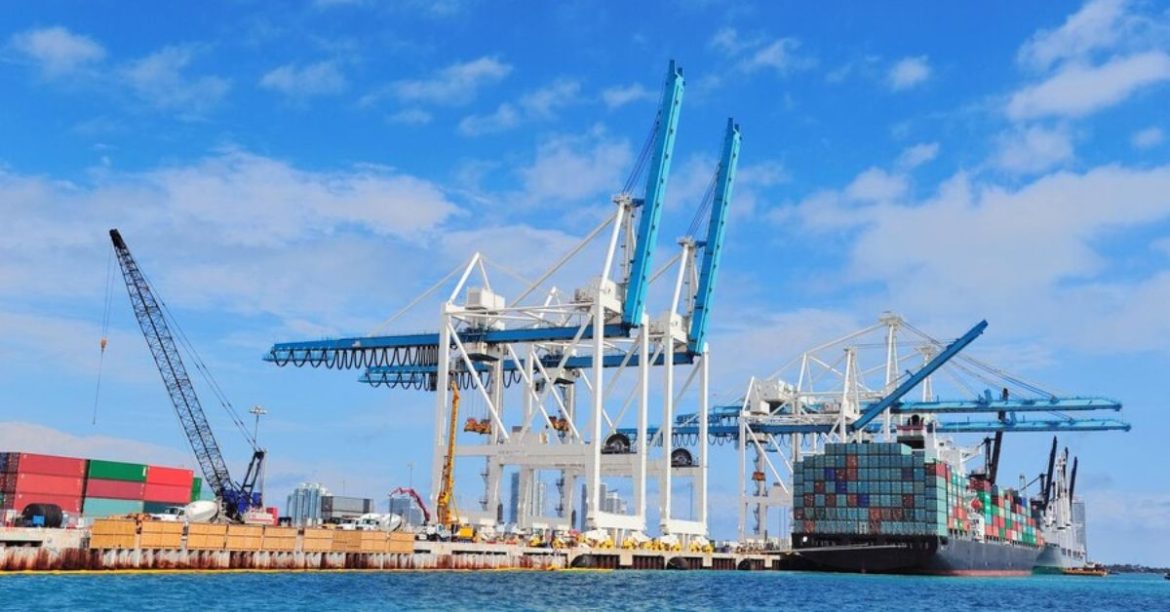The global logistics and shipping industry is the backbone of international trade, and container terminals play a pivotal role in facilitating the movement of goods across the globe. As the volume of cargo continues to grow, the need for efficient and effective container handling solutions becomes increasingly critical. One such solution that has proven to be highly effective is the straddle carriers. This article explores how straddle carriers enhance efficiency in container terminals, examining their features, benefits, and impact on terminal operations.
Understanding Straddle Carriers
Straddle carriers are specialized vehicles designed to lift and transport containers within a port or terminal. Unlike other container handling equipment, such as reach stackers or gantry cranes, straddle carriers operate by straddling the container and lifting it from the top using spreaders. This design allows for greater flexibility and mobility, enabling straddle carriers to navigate tight spaces and transport containers over short distances quickly and efficiently.
Key Features of Straddle Carriers
Mobility and Flexibility: Straddle carriers are highly maneuverable, capable of moving in multiple directions. This mobility allows them to navigate congested terminal environments and access containers stacked in tight rows.
Height and Reach: Straddle carriers can lift containers to significant heights, allowing for the stacking of containers up to four or five high. This capability maximizes vertical storage space and enhances the terminal’s overall storage capacity.
Load Capacity: Modern straddle carriers can handle loads of up to 60 tons, making them suitable for transporting both standard and heavy-duty containers. This versatility allows terminals to manage a wide range of cargo types.
Automation and Technology: Many straddle carriers are now equipped with advanced automation features, such as GPS navigation, remote control operation, and automated container tracking systems. These technologies improve operational efficiency and reduce the risk of human error.
Enhancing Efficiency in Container Terminals
Speed and Throughput
Straddle carriers significantly enhance the speed and throughput of container handling operations. Their ability to quickly pick up and transport containers to different locations within the terminal reduces the time taken for loading and unloading vessels. This efficiency is crucial for maintaining tight shipping schedules and minimizing vessel turnaround times.
For example, when a container ship arrives at a terminal, straddle carriers can swiftly remove containers from the ship and transport them to designated storage areas or directly to waiting trucks or trains. This rapid movement ensures that vessels spend less time docked, freeing up berths for incoming ships and increasing the terminal’s overall throughput.
Space Optimization
Space is a valuable commodity in container terminals, and efficient space utilization is essential for maximizing operational capacity. Straddle carriers contribute to space optimization by enabling higher stacking of containers. Their ability to lift containers to significant heights allows terminals to make better use of vertical storage space, reducing the need for extensive horizontal space.
Additionally, the mobility of straddle carriers allows them to access containers stored in tight rows, minimizing the need for wide aisles and further optimizing space. This compact stacking and efficient space utilization are particularly beneficial for terminals with limited land availability.
Flexibility and Versatility
Straddle carriers offer unparalleled flexibility and versatility in container handling operations. Unlike fixed cranes or rail-mounted gantry systems, straddle carriers can move freely around the terminal, accessing containers in various locations. This flexibility allows terminals to adapt quickly to changing operational needs and efficiently manage container flows.
For instance, during peak periods or unexpected surges in cargo volume, straddle carriers can be deployed to different areas of the terminal to alleviate congestion and ensure smooth operations. Their versatility also enables terminals to handle a diverse range of container types, including standard, refrigerated, and oversized containers.
Reduced Labor Costs
Automation and advanced technology in modern straddle carriers have significantly reduced the reliance on manual labor. Automated straddle carriers can operate with minimal human intervention, reducing the need for a large workforce. This reduction in labor costs not only enhances operational efficiency but also improves safety by minimizing the risk of accidents and injuries associated with manual container handling.
Furthermore, automated straddle carriers can operate continuously without fatigue, ensuring consistent performance and reliability. This continuous operation is particularly advantageous for terminals that operate 24/7, as it maximizes productivity and minimizes downtime.
Enhanced Safety
Safety is a paramount concern in container terminals, and straddle carriers contribute to creating a safer working environment. The advanced technology and automation features in modern straddle carriers enhance safety by reducing the risk of human error and accidents. For example, automated straddle carriers are equipped with collision avoidance systems, ensuring that they operate safely and efficiently even in congested areas.
Moreover, the design of straddle carriers allows operators to have a clear view of their surroundings, minimizing blind spots and improving overall visibility. This improved visibility enhances situational awareness and reduces the likelihood of accidents involving other vehicles or personnel.
Environmental Impact
As the shipping industry faces increasing pressure to reduce its environmental footprint, straddle carriers are playing a role in promoting sustainability. Many modern straddle carriers are powered by electric or hybrid engines, significantly reducing emissions compared to traditional diesel-powered equipment. This shift towards cleaner energy sources not only helps terminals comply with environmental regulations but also contributes to reducing overall greenhouse gas emissions.
Additionally, the efficiency and speed of straddle carriers reduce the time vessels spend docked, minimizing fuel consumption and emissions from idling ships. By promoting faster and more efficient container handling, straddle carriers contribute to a more sustainable and environmentally friendly terminal operation.
Conclusion
Straddle carriers are a critical component of modern container terminals, offering a range of features and benefits that enhance operational efficiency. Their mobility, flexibility, and advanced technology enable faster and more efficient container lifting machine, optimizing space utilization and reducing labor costs. Moreover, straddle carriers contribute to a safer and more sustainable working environment, aligning with the industry’s goals of improving efficiency and reducing environmental impact.




